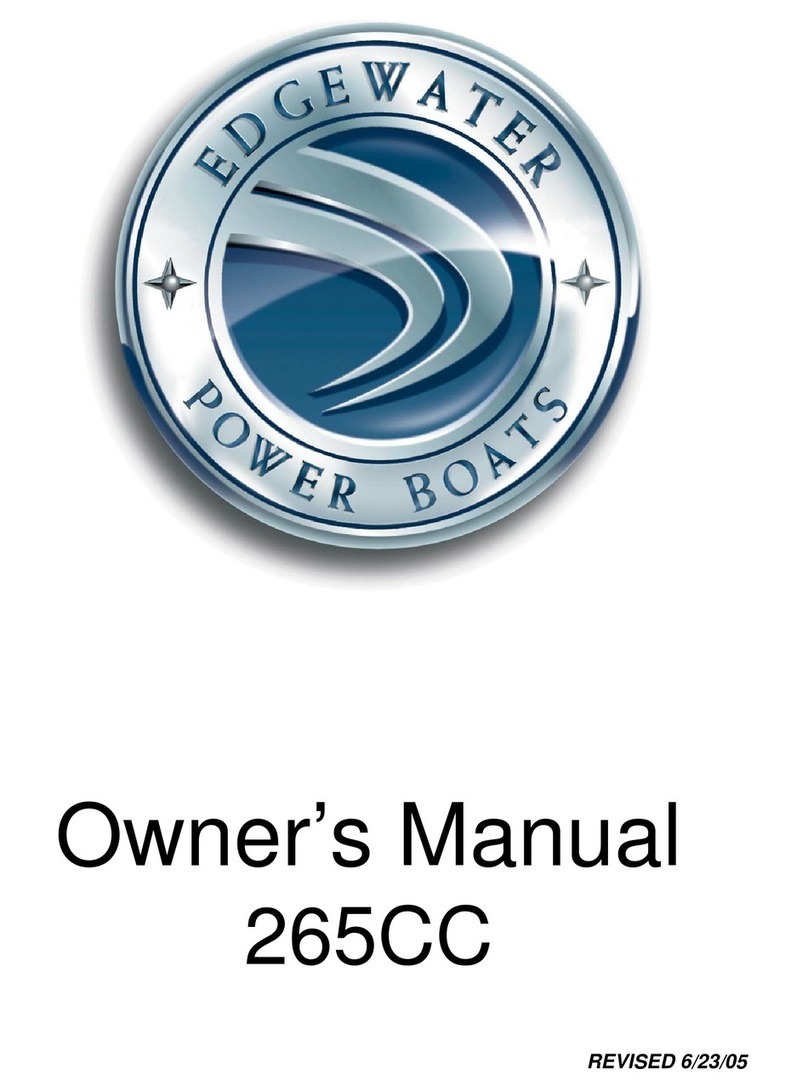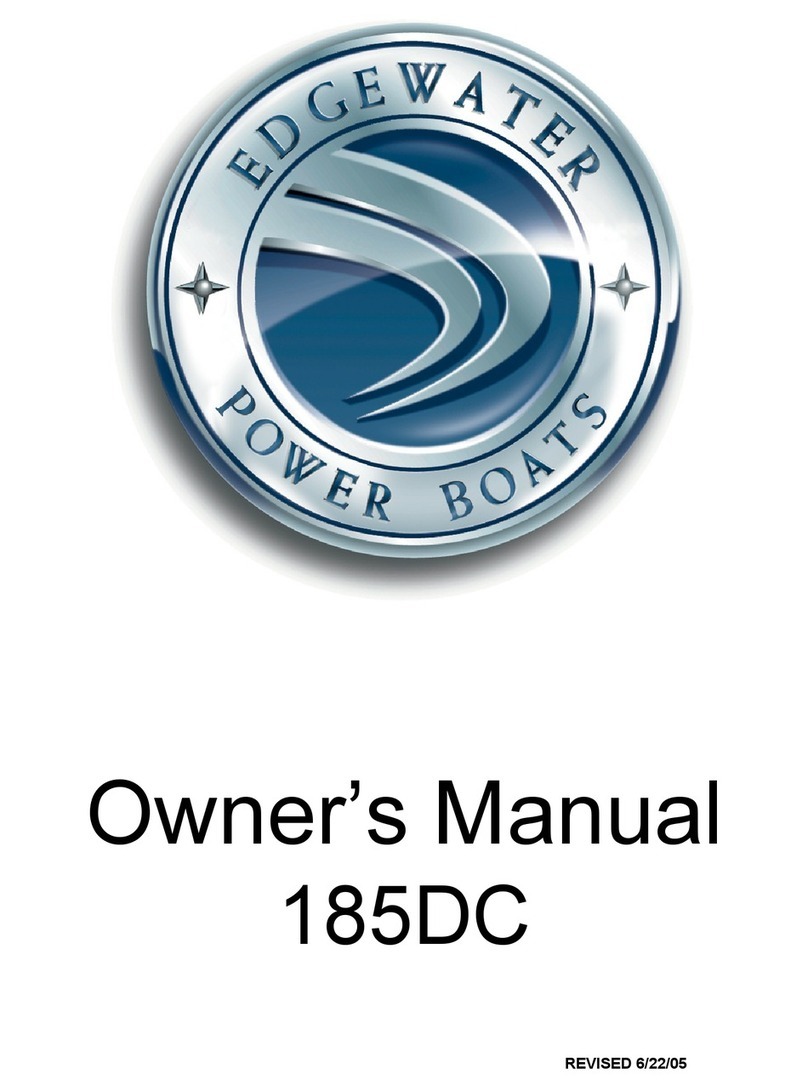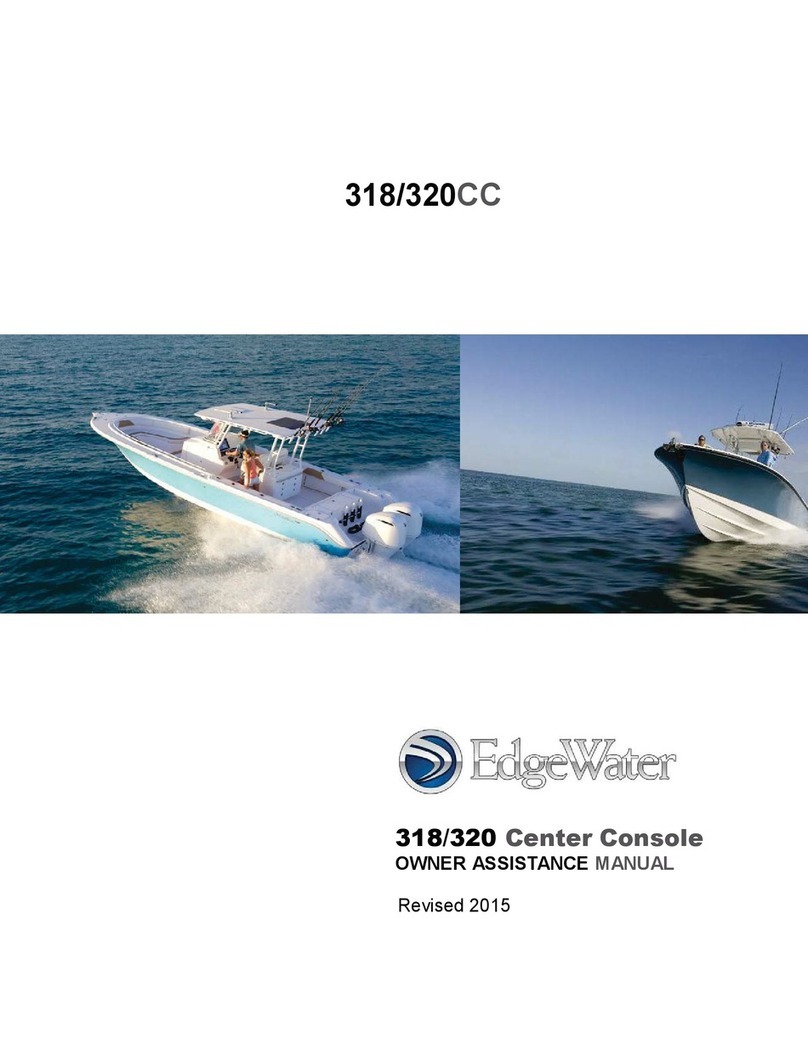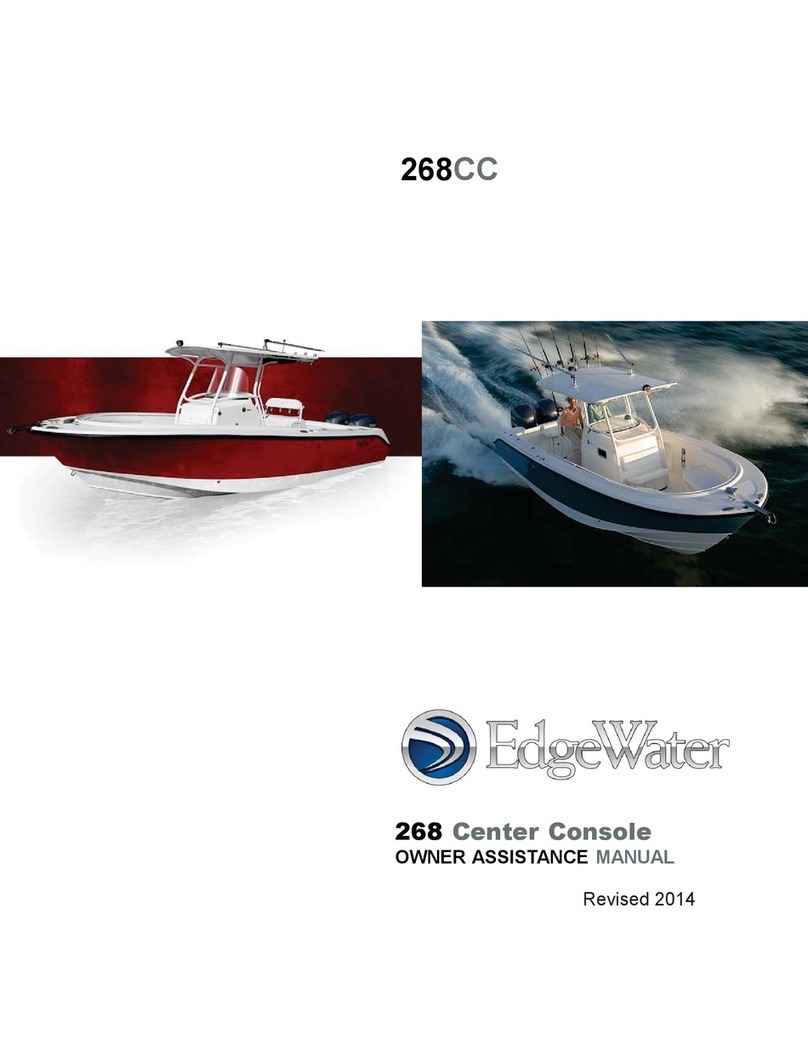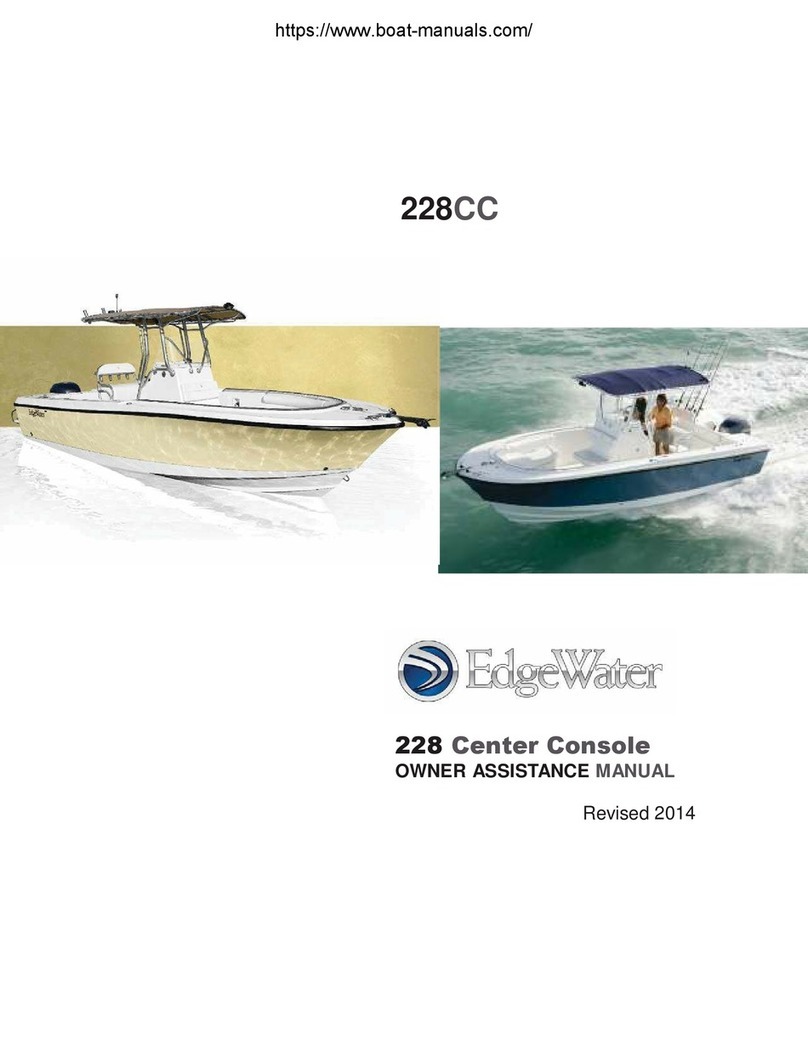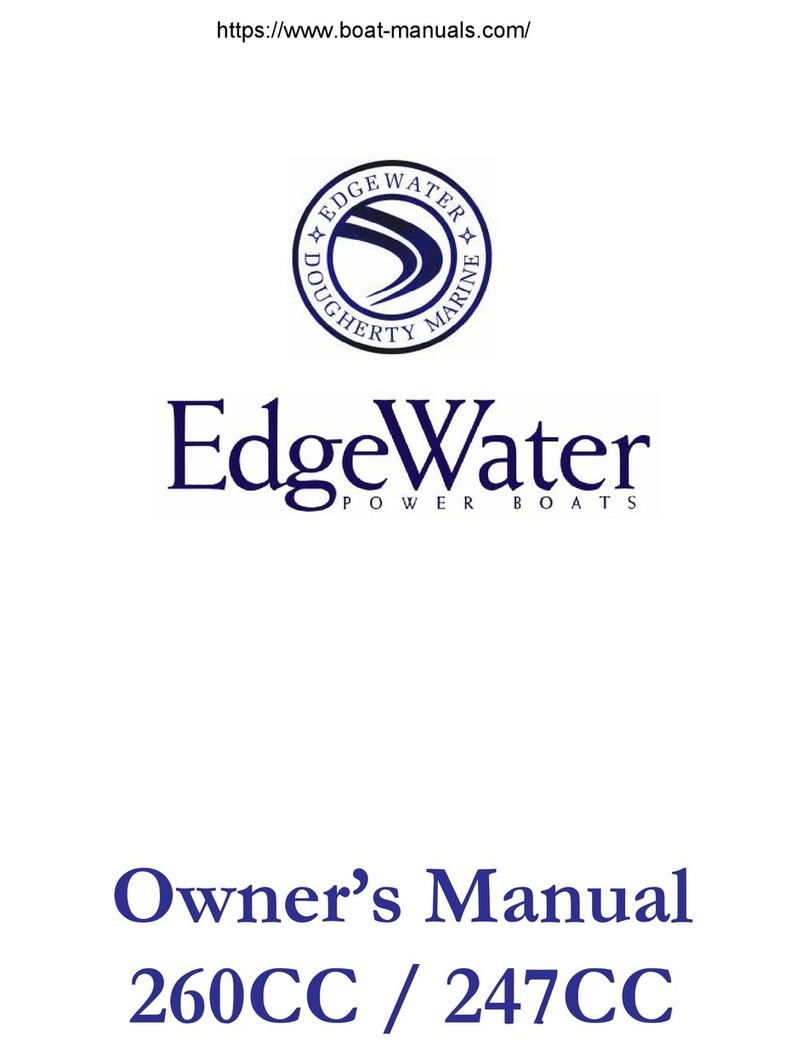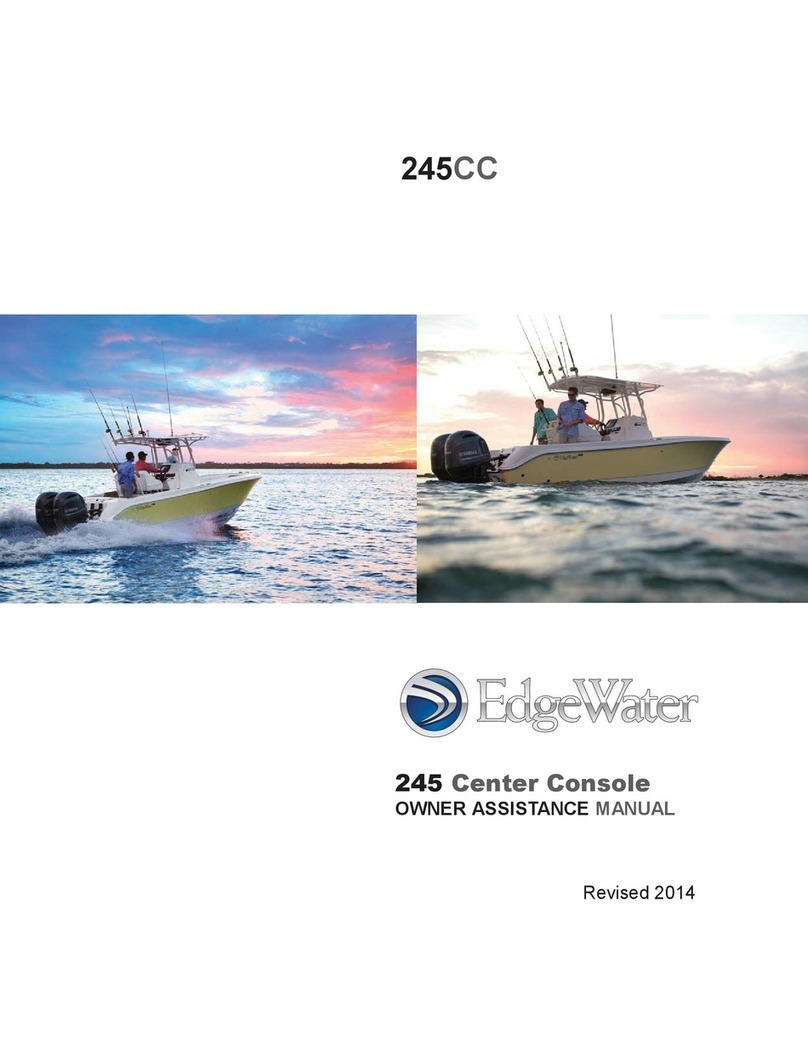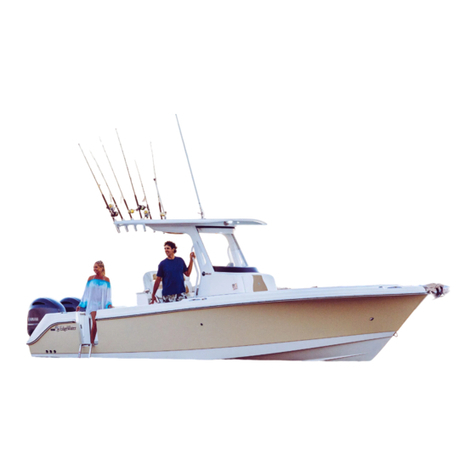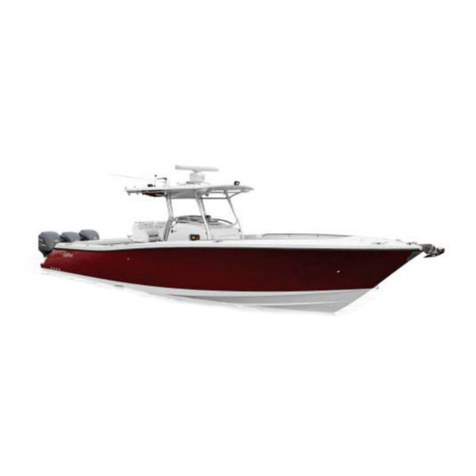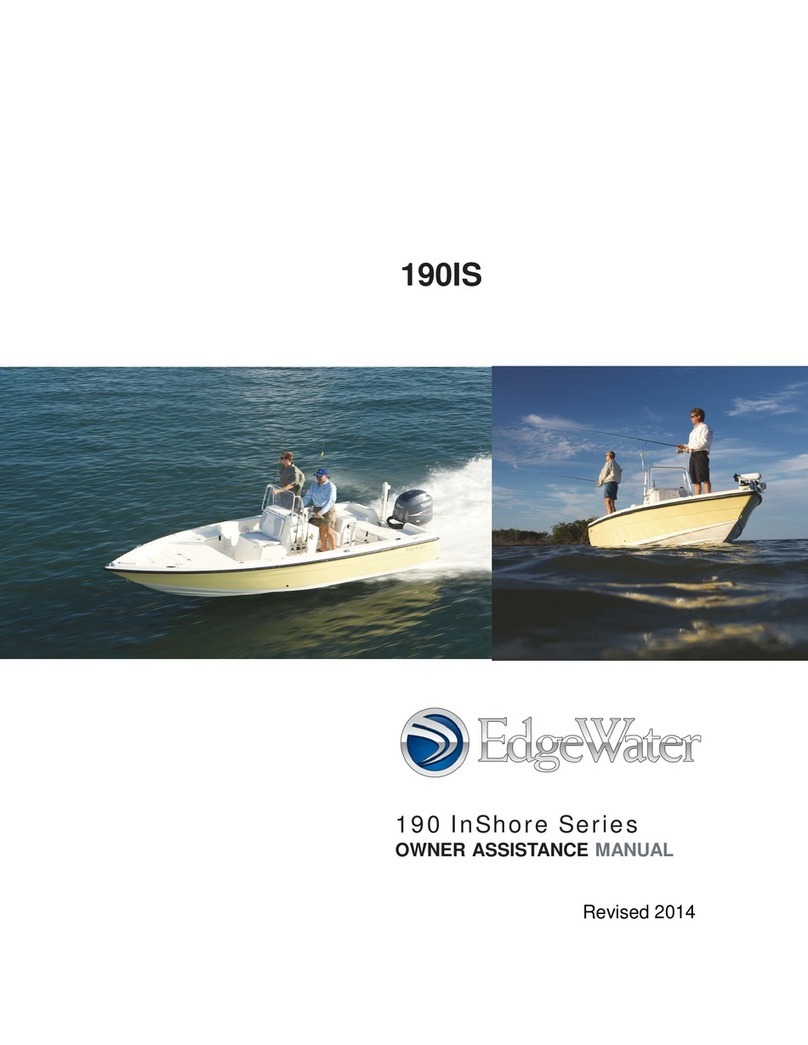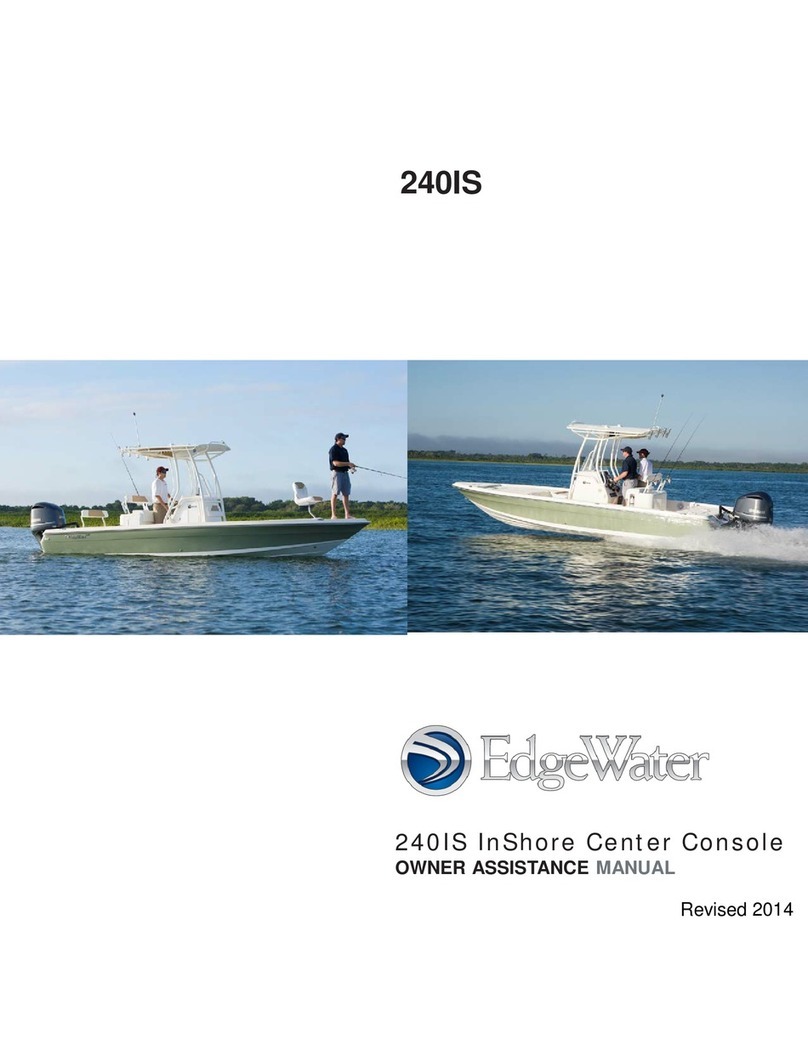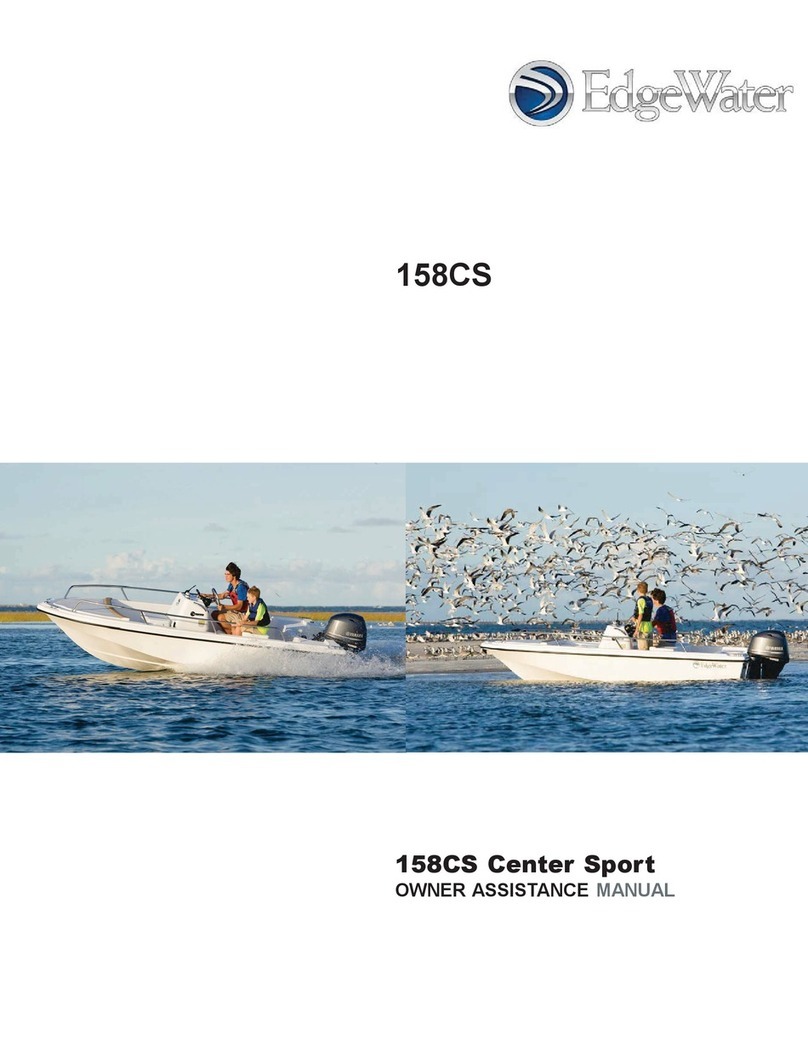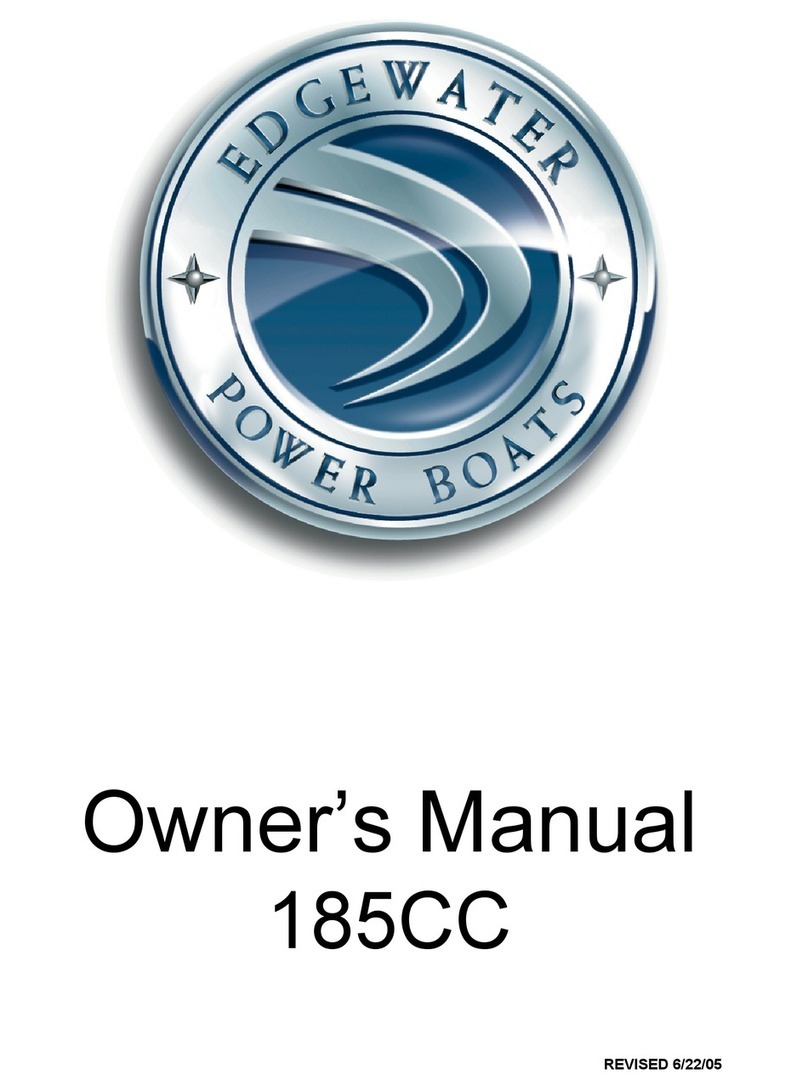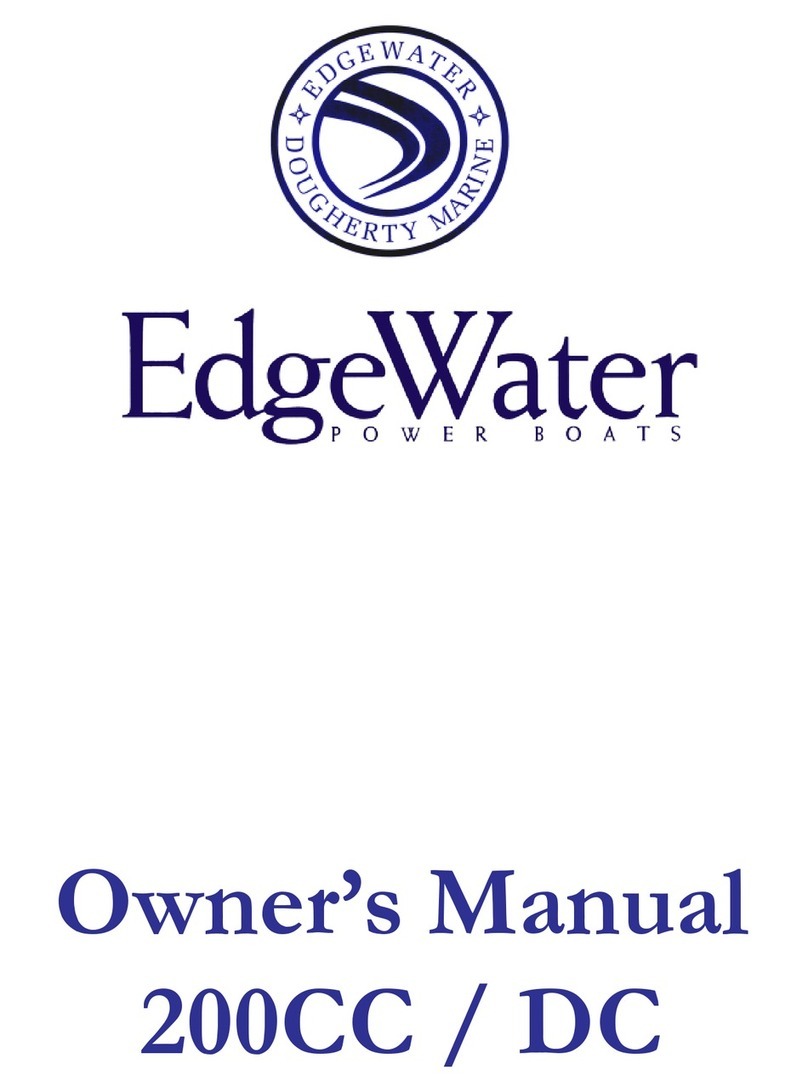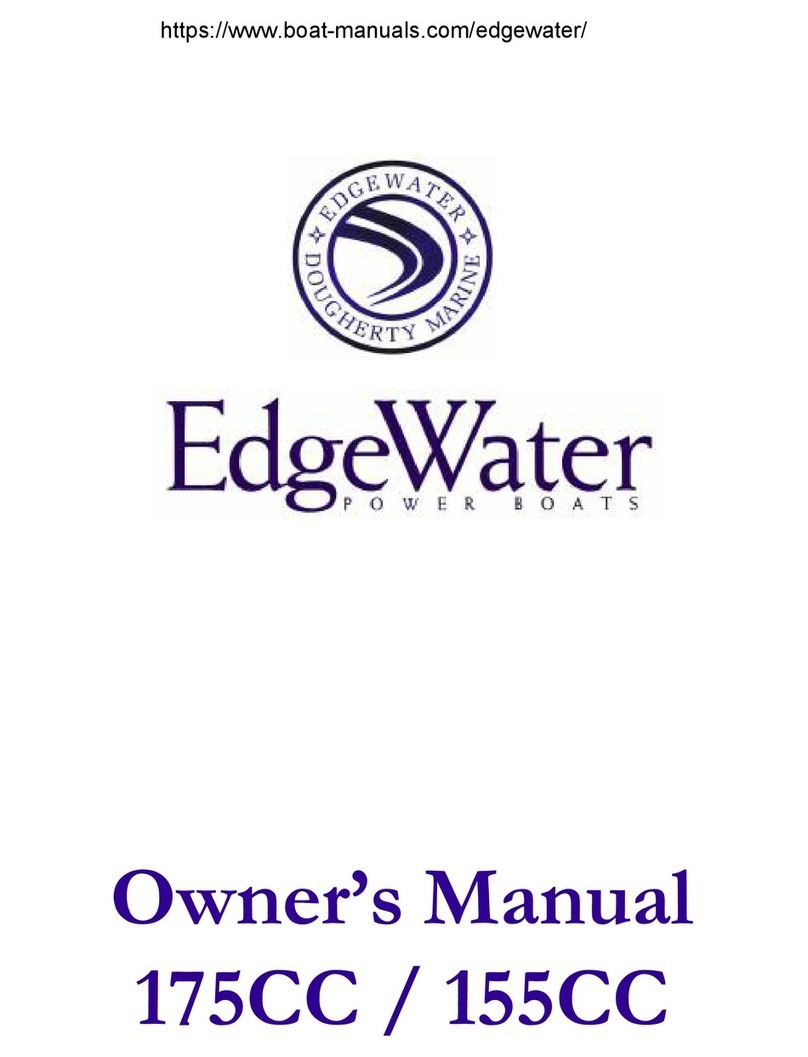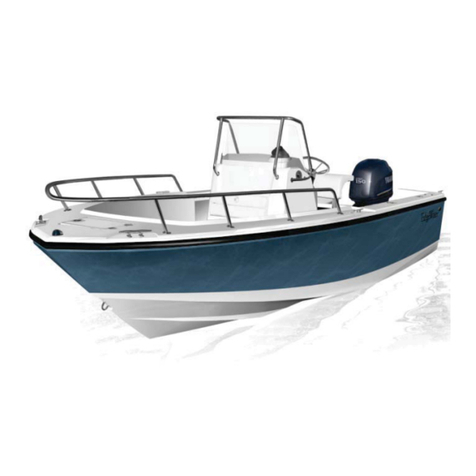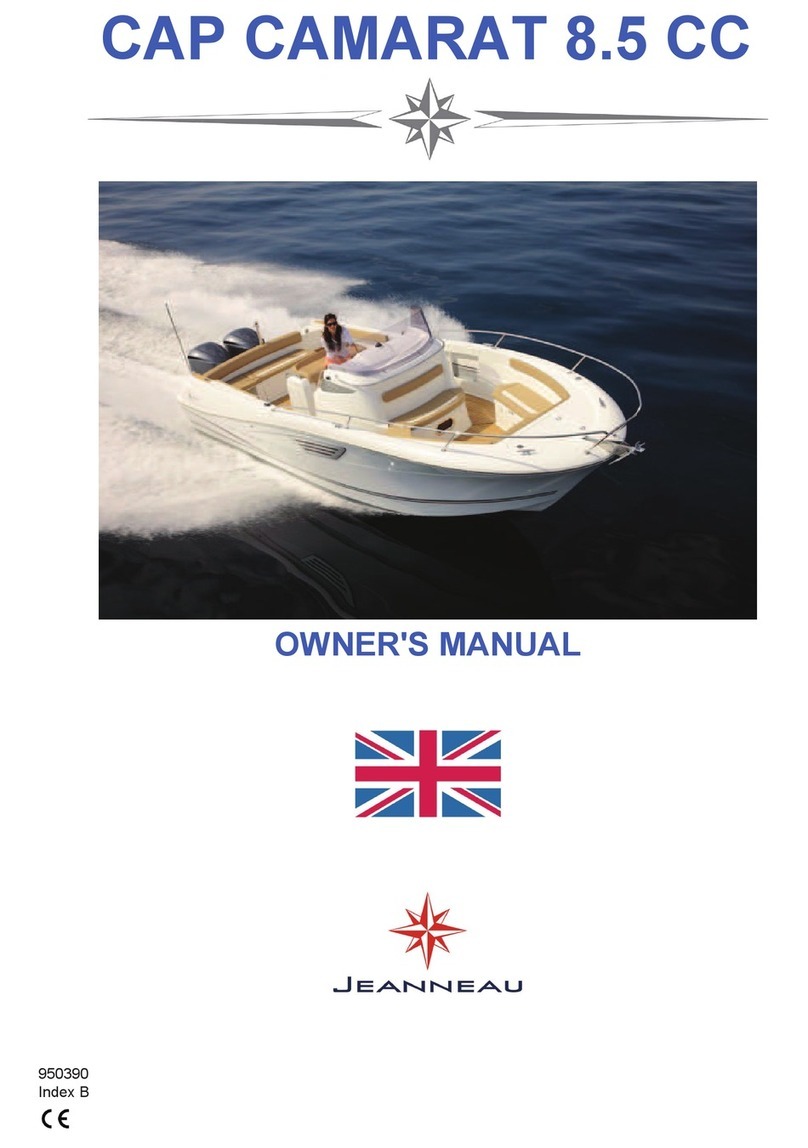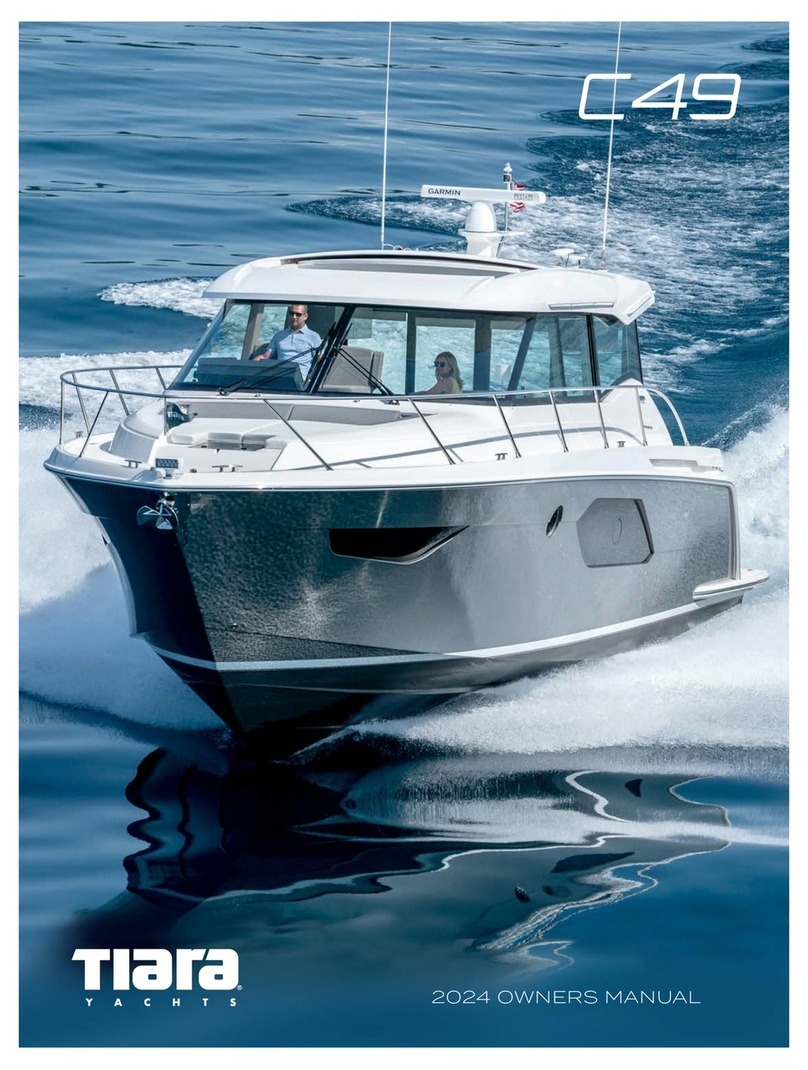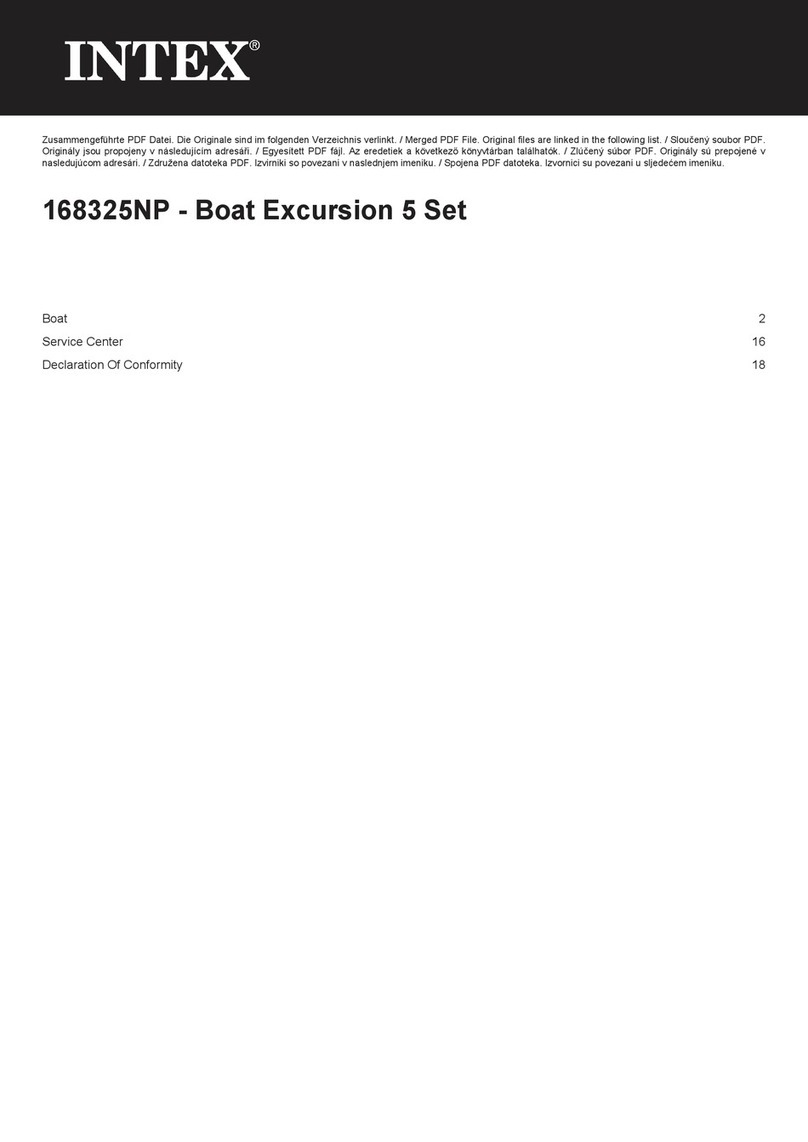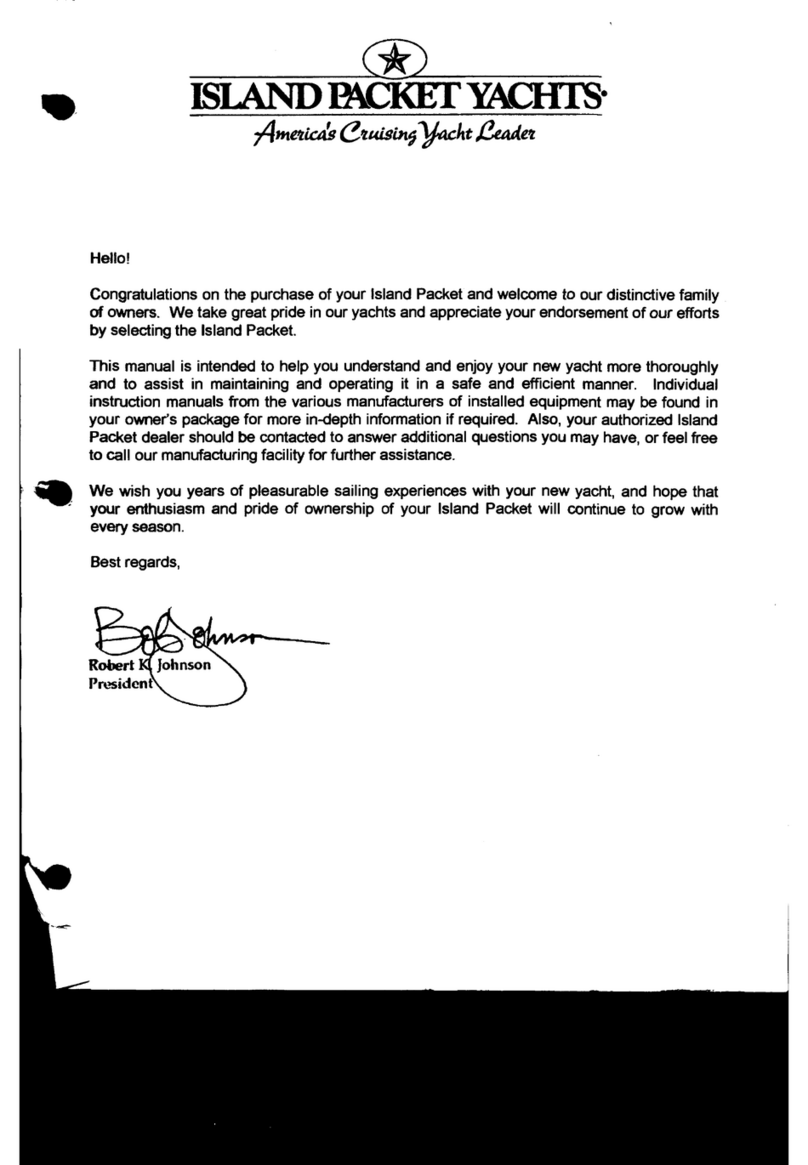
9
Don’t attempt to service your outboard or any of its components unless you are
thoroughly familiar with its operation and dangers. Many of the moving part components
are exposed and can pose an extreme danger to anyone unfamiliar with their operation.
Always leave the servicing to a qualified technician.
Each manufacturer provides manuals designed to assist you in the proper operation and
maintenance of your new engine. Follow their guidance and schedules for proper operation of
your new engine. With a modern outboard there is little to do as long as proper maintenance is
performed, in accordance with the manufacturer’s recommendations. If the boat is to be kept in
saltwater for an extended period, electrolysis and marine growth can become a problem. When
leaving your boat in salt water overnight or for an extended period, tilt the engine as high out
of
the
water as possible. This will decrease the possibility of marine growth on the outside of the
engine, as well as reduce the potential of marine growth compromising the cooling water inlets in
the lower unit, which can cause overheating.
Do not paint your outboard’s lower unit with paints designed for boat hulls. Some can
cause severe damage to your engine. Check with your engine manufacturer to get their
recommendation.
Do not attempt control adjustments unless you are very familiar with their function, operation and
adjustment. Failure to properly adjust the system components can adversely affect your boat’s
performance and safety. Mis-adjustment can also cause severe control, engine or lower unit
damage.
Please return all warranty cards for boat, engine and other related items. This will assist
you in the event you have a warranty problem.
3.2 Engine Cooling System
Most outboard engines are cooled by water taken in through ports in the lower part of the drive
section. Make sure these ports are free of debris or other items that might cause the flow to be
restricted. Maintain a routine vigilance to see that the visual inspection streams have a steady
flow of water. If they do not, shut down the engine to see if they are clogged or if there is a more
serious problem. Be especially watchful if you have gone through an area of vegetation or
shallow water as the intake ports can become clogged with weeds, dirt or other debris.
Do not run your outboard without water coming into the lower unit. The water pump impeller can be
damaged in only seconds of this type of operation.
3.3 Propellers
A turning propeller moves the boat through the water, forward or backward. They should always
be clean and free from nicks or dings, which can adversely affect performance. Your dealer can
assist you in the proper selection of a propeller for your boat. This selection is based on the
horsepower of the engine and its relationship to the size and weight of the boat.
Propeller sizes are determined by two numbers, which appear on different propellers at various
locations. They are listed in sequence, for example 13 x 17. The first number is the diameter of
the propeller and the second is the pitch. Pitch is the theoretical distance the propeller moves
through the water with each complete revolution. The larger the number, the greater the
theoretical movement. It also follows that the larger the number the greater horsepower is
required to turn it. With a load which is “normal”, or usual for your boating activities, the engine
should be able to reach its maximum operating RPM range at wide open throttle (WOT) and full
